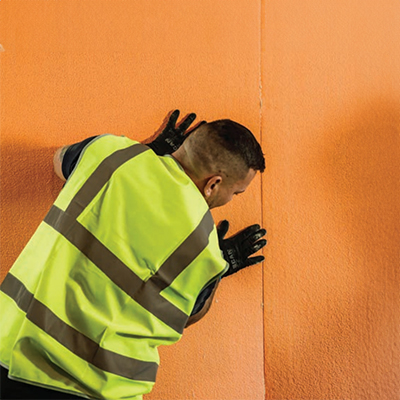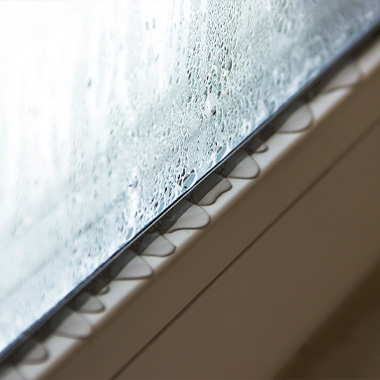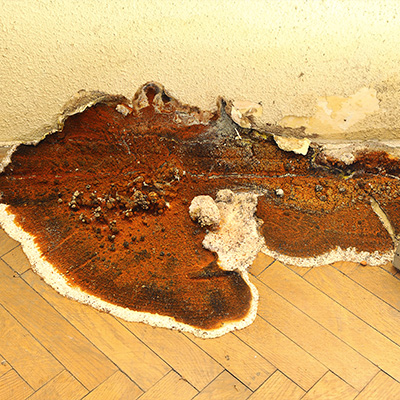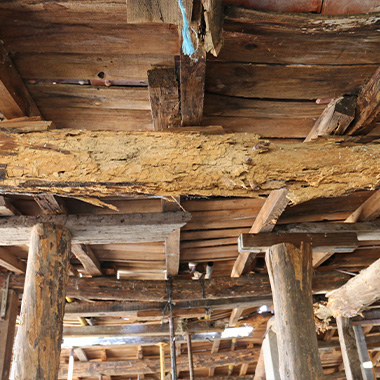Dry rot and wet rot can affect buildings of all ages and if decay is discovered it should be identified and remedial action taken without delay.
Fungal decay occurs in timber which becomes wet for some time and is the result of the attack by one of a number of wood-destroying fungi. The most well-known are Serpula lacrymans—the true dry rot fungus—, Coniophora puteana the Cellar fungus and Poria vaillantii the Pore or Mine fungus. Many other fungi also occur and some have recently been particularly linked with decay in door and window frames.
Wet rot occurs more frequently, but is less serious; decay is typically confined to the area where timber has become and remains wet.
What is Wet Rot?
This type of rot is caused principally by Coniophora puteana. Poria vaillantii is another important wet rot fungus and a number of less common fungi also occur. While each fungus has its own unique features, the general appearance of wet rot is similar—as is the treatment.
Wet rot is typically confined to the area of dampness because the mycelium does not spread into walls.
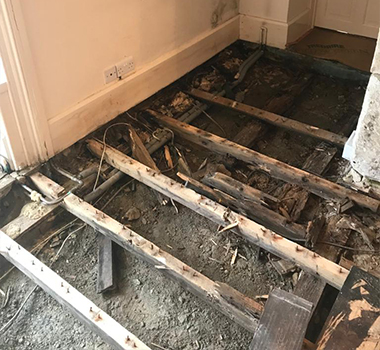
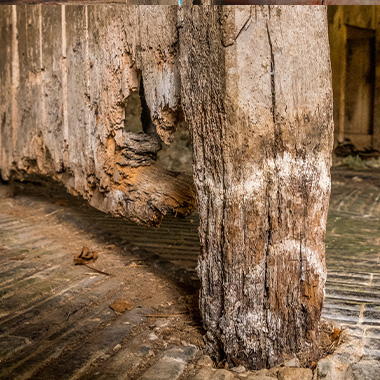
Identifying Wet Rot
- Fungus causes the Timber to shrink and crack
- Timber feels spongy and soft
- Discolouration of timber
- In some cases, mycelium strands may appear on the timber
- Wet rot stays to the damp area and does not spread to the walls for example
- Paint finish can appear damaged.
- Damp musty smell
It is very important that the type and cause of the fungal decay are correctly identified before any corrective action can be considered. It is for these reasons that it is important that a detailed diagnostic inspection is carried out by a competent specialist. This inspection should be followed by the submission of a report that details both the cause of the decay and the proposed remedial action.
How it Works




